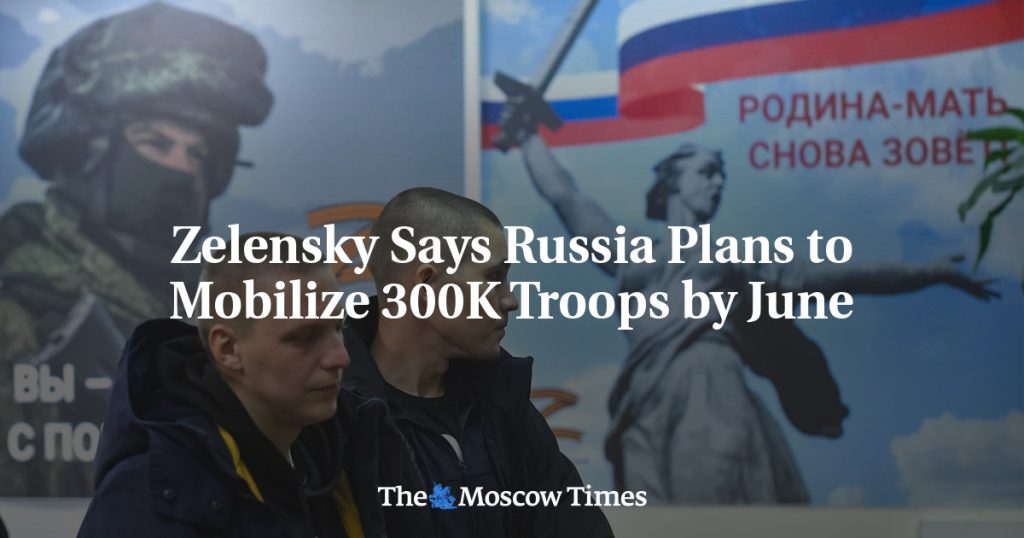Ukrainian President Volodymyr Zelensky recently revealed that Russia is planning to draft around 300,000 new troops over the next two months. This information was shared during a press conference with Finnish President Alexander Stubb, with Zelensky stating that Russia is preparing for this significant increase in military personnel. The details of this recruitment campaign were not provided, leaving many questions about the source and nature of this information. Zelensky’s announcement comes after Moscow previously drafted 300,000 reservists during a partial mobilization drive in September 2022, where thousands of men tried to avoid fighting in Ukraine.
News reports have also indicated that Russia was planning to recruit 300,000 soldiers for a renewed military offensive without officially declaring a mobilization drive. However, sources close to Russia’s Defense Ministry have noted that the Kremlin may be hesitant to mobilize such large numbers of men due to concerns about public backlash. Zelensky’s comments suggested that Ukraine does not require half a million people to be mobilized and that the specific number has not yet been determined. One response to the escalating tensions has been the signing into law of a measure that lowers Ukraine’s army mobilization age from 27 to 25, in an effort to address the shortage of soldiers defending against Russia’s invasion.
The situation between Ukraine and Russia has been increasingly tense in recent years, with Russia’s military actions receiving widespread international attention. Zelensky’s warning about Russia mobilizing new troops highlights the ongoing threat that Ukraine faces from its neighbor. The fear of further escalation and conflict is evident, with implications for both countries and the broader region. Zelensky’s efforts to address the military challenges facing Ukraine, such as the lowering of the mobilization age, reflect the urgency of the situation and the need for decisive action to protect the country.
The prospect of additional Russian troops being mobilized raises concerns about the potential for further conflict and instability in the region. Zelensky’s mention of the previous mobilization of reservists and the impact on those fleeing to avoid fighting underscores the human cost of such military actions. The uncertainty surrounding Russia’s intentions and the response from Ukraine indicate a volatile situation that could have significant repercussions for both countries. The international community will be watching closely as events continue to unfold and the potential for further escalation remains a cause for concern.
The political and strategic implications of Russia’s military plans and Ukraine’s response are far-reaching and complex. Zelensky’s statements about the need for additional troops to defend against Russia’s actions reflect the ongoing security challenges facing his country. The diplomatic efforts to address the situation will be crucial in preventing further escalation and finding a resolution to the conflict. As tensions continue to rise and military actions are taken, the risks for both Ukraine and Russia increase, with potential consequences for regional stability and global security. The coming months will be critical in determining the next steps in this ongoing crisis and the path towards peace or further conflict.


